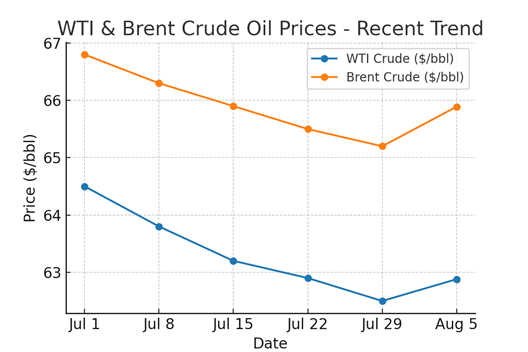Two National Guard members shot near White House
Crude oil prices remain locked in a narrow trading range, with both WTI and Brent showing little conviction to break higher. The market is grappling with a structural backdrop in which supply is expected to outpace demand in 2025 and 2026, keeping upward momentum limited.
WTI has hovered near $62–$63/bbl and Brent around $65–$66/bbl over the past month, with brief rallies quickly sold into. The latest moves — WTI up 0.4% to $62.88 and Brent up 0.4% to $65.89 — highlight the ongoing equilibrium between short-term buying interest and broader bearish fundamentals.

Geopolitics remain a key swing factor. Progress in U.S.-Russia trade discussions could unlock more oil supply, adding downward pressure, while escalating U.S. tariffs risk curbing global manufacturing and trade activity, weighing on demand. At the same time, traders are watching inventory and consumption data closely, given that any sharp deviations could trigger volatility spikes.
Market positioning also reflects caution. Speculative long exposure has been pared back in recent weeks, suggesting that investors are adopting a tactical rather than directional approach. Until there is greater clarity on global growth trends and trade policy, crude prices are likely to remain rangebound, with a bias toward the downside.
From a technical perspective, the market is currently testing key support levels. A decisive break below $62 in WTI could invite further selling pressure, potentially dragging prices toward $60/bbl. Conversely, holding above current levels alongside a positive macroeconomic shift could open the door for a rebound.
